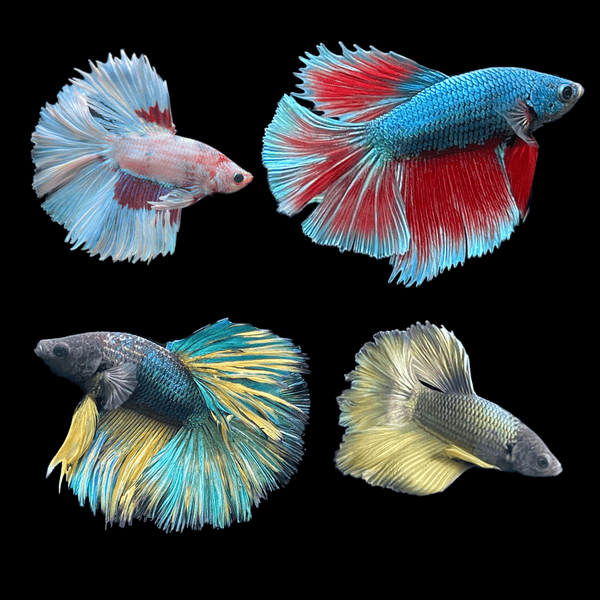Recognizing Betta Fish Habits: What Every Proprietor Ought To Know
Recognizing Betta Fish Habits: What Every Proprietor Ought To Know
Blog Article
Breeding Betta Fish: a Comprehensive Step-By-Step Guide to Efficiently Raising Baby Bettas From Eggs to Their Adult Years
Reproducing Betta fish is a precise undertaking that needs careful preparation and execution to ensure the effective advancement of fry from eggs to develop fish. Choosing genetically varied reproduction sets with preferable features is just the start; creating an ideal setting and understanding the intricacies of the reproducing process are equally crucial. As the male Betta diligently constructs a bubble nest and guards the valuable eggs, the subsequent phases of care and change demand interest to detail and expertise of best methods. How does one browse the challenging yet gratifying path of supporting these dynamic creatures to the adult years?

Choosing Reproduction Pairs
When beginning on the journey of reproducing Betta fish, picking the right reproduction pairs is crucial to attaining preferable attributes and a healthy lineage - betta fish. The initial step in this procedure is to determine the details traits you desire to boost or protect, such as shade, fin kind, and body shape. It is necessary to select genetically diverse pairs to avoid inbreeding, which can lead to wellness problems and unwanted features
Assess potential reproducing prospects carefully. A healthy and balanced male Betta needs to exhibit lively shades, an active temperament, and well-formed fins, while the woman ought to also display vibrant pigmentation and a rounded tummy, suggesting readiness for spawning. Observing the temperament of both fish is crucial, as aggressive or extremely reluctant people may not reproduce successfully.
Paperwork of family tree is similarly crucial. Keeping documents of the moms and dad fish's ancestry can help you track hereditary attributes and possible concerns. Furthermore, get in touch with respectable dog breeders or online resources for assistance on selecting suitable sets. Eventually, investing time in the choice process will substantially enhance the likelihood of generating solid, lively offspring that fulfill your breeding objectives (betta fish).

Preparing the Reproduction Container
Producing an optimal breeding atmosphere is a vital action after selecting suitable sets for Betta fish. The breeding tank should be specifically created to supply convenience and promote the all-natural breeding actions of the fish. Beginning with a tank size of at least 10 gallons to ensure adequate area for both the man and women Bettas.
Maintain a gentle filtering system to keep the water clean while preventing solid currents that can emphasize the fish. Additionally, an air rock can be included in supply oxygenation without disrupting the water surface as well a lot.
Temperature regulation is critical; go for a steady series of 78-82 ° F(25-28 ° C) utilizing a reputable heating system. The pH level need to be kept in between 6.5 and 7.5, and normal water modifications are necessary to make certain high water quality.
Incorporate drifting plants or spawning sponges to produce hiding areas for the lady, while additionally encouraging bubble nest structure by the male - betta fish. Finally, guarantee the storage tank is totally free from sharp decors and any kind of possible hazards, as the welfare of the fish ought to constantly be prioritized during this crucial phase of reproduction.
The Reproduction Process
Normally, the reproducing process for Betta fish includes a collection of unique and visible actions that show readiness for recreation. The male Betta starts by building a bubble nest at the water's explanation surface area, which functions as a site for the fertilized eggs. This nest is vital, as it supplies a safe environment for the eggs till they hatch out.
Once the nest is developed, the man will certainly present courtship habits, such as flaring his fins and displaying vivid colors to attract the woman. The female, upon noticing the male's preparedness, will certainly respond by displaying vertical stripes along her body, indicating her receptiveness.
When the female techniques, the male takes part in a breeding dancing, often causing a welcome referred to as the "spawning." Throughout this accept, the female launches her eggs, which the male feeds promptly. The fed eggs then are up to the bubble nest, where the male thoroughly gathers and returns them to the nest. Following this, the male assumes duty for protecting the nest and ensuring the safety and security of the eggs until they hatch out, generally within 24-36 hours. This phase is critical in the breeding procedure, laying the structure for effective fry development.
Taking Care Of Betta Fry
Looking after Betta fry needs careful focus to their setting and nutrition to make certain healthy growth and growth. After hatching out, Betta fry are very small and prone, requiring a secure and clean habitat. Maintaining a water temperature level between 78 ° F and 80 ° F is crucial, as Betta fry thrive in cozy problems. Furthermore, ensure that the water is without unsafe contaminants; normal water changes of 10-20% are advised to maintain ideal water quality.
Feeding Betta fry is equally essential. check my reference Feed them small amounts numerous times a day, being careful not to overfeed, which can lead to water top quality problems.
Transitioning to Adult Bettas
As Betta fry mature, transitioning them to grown-up Bettas is a critical stage that requires cautious monitoring of their setting and social interactions. This procedure typically starts when the fry reach around 6 weeks old, whereupon they can be slowly introduced to a much more structured living atmosphere.
To promote this shift, it click here for more info is important to make certain that the water criteria-- such as temperature, pH, and ammonia degrees-- are optimum and secure. Adult Betta fish flourish in cozy water (around 78-80 ° F) with a pH of 6.5 to 7.5. Progressively accommodate the fry to these problems to minimize tension.
Social communications are one more essential variable; man Bettas are infamously territorial and hostile. It is a good idea to separate men into individual tanks as they grow. Female Bettas can be housed together, yet treatment needs to be taken to keep an eye on for indicators of aggression.
In addition, nutritional changes should be made as the fry grow. Integrate premium pellets and live foods to sustain their development and health. By handling these aspects efficiently, you can promote an effective transition to their adult years for your Betta fish.
:strip_icc()/siamese-fighting-fish-bettas-1378308-hero-f459084da1414308accde7e21001906c.jpg)
Conclusion
Effective breeding of Betta fish calls for mindful attention to detail throughout the whole procedure, from picking genetically diverse pairs to offering optimum care for fry. Additionally, a balanced diet regimen and steady adjustment to grown-up environments are critical for the growth and advancement of Betta fish.
Report this page